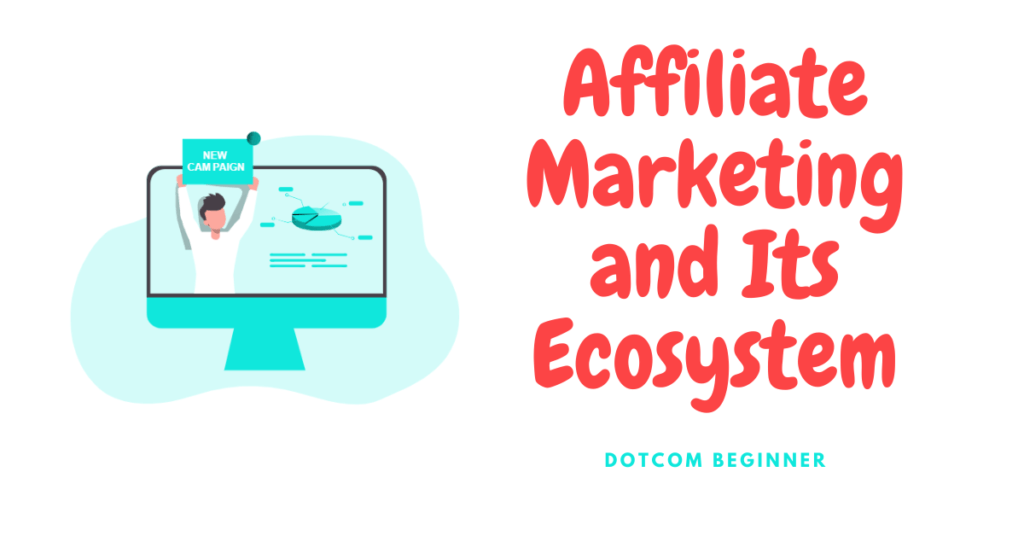Last Updated on January 23, 2023
Are you looking to increase your business’s online sales and revenue?
Affiliate marketing is a powerful and effective way to do just that. By forming partnerships with other businesses and people who promote your goods and services, you can reach more people and make more sales.
Imagine having a team of dedicated marketers working to promote your business without you having to pay them a salary or give them benefits. With affiliate marketing, that’s exactly what you’ll get.
Keep reading to learn more about how affiliate marketing works and the strategies you can use to set up and optimize your own affiliate program.
Key Takeaways (TL;DR)
- Affiliate marketing is a powerful and effective way for product creators to increase online sales and revenue.
- To set up an affiliate program, choose the right affiliate network that aligns with your business needs and set fair and competitive commission rates.
- Create guidelines and policies for affiliates to ensure they promote your products in a way that aligns with your brand and values
- Recruit the right affiliates by reaching out to influencers, bloggers, and other businesses in your niche and provide them with resources and support
- Promote your affiliate program using social media and email marketing, influencer marketing, website, and blog promotion, and exclusive deals and promotions
- Keep your program fresh and updated by regularly adding new products and offers and tracking and managing your affiliates’ performance.
🌟 Setting up an affiliate program
Okay, so you’ve decided to set up an affiliate program. The first step is to choose the right affiliate network. There are a lot of options out there, like Commission Junction, ShareASale, and Amazon Associates, but you have to pick one that aligns with your business needs.
Next up, you’ll need to set the commission rates and terms. The commission rate is the percentage of the sale you’ll pay your affiliates to promote your products or services. Make sure to set a fair and competitive rate; that way, you’ll attract more affiliates to your program.
Another important step is to create guidelines and policies for your affiliates to follow. This should include information on how to promote your products, what types of promotions are allowed, and any restrictions or prohibitions. You want to ensure that your affiliates promote your products in a way that aligns with your brand and values.
Lastly, you’ll want a system to track and manage your affiliates’ activities. This will help you monitor their performance, pay them their commissions, and make sure your program runs smoothly.
🌟 Recruiting and managing affiliates
Once you’ve set up your affiliate program, the next step is to find the right affiliates to promote your products. This can be done through various methods, such as reaching out to influencers, bloggers, and other businesses in your niche or using affiliate recruitment platforms. It’s important to look for affiliates with a large and engaged audience and a track record of successful affiliate promotions.
Once you’ve found the right affiliates, it’s important to set clear expectations and guidelines for them to follow. This should include information on how to promote your products, what types of promotions are allowed, and any performance targets they need to meet. By making it clear what you want from your affiliates, you can make sure that they are working toward the same goals and objectives as your business.
In addition to telling your affiliates what to expect, it’s important to give them support and resources. This can include marketing materials, product images, and other resources they can use to promote your products. You should also be available to answer any questions and provide support when needed. If you give your affiliates the tools and help they need, they will be more likely to do a good job of promoting your products.
Finally, it’s important to keep track of your affiliates’ performance and provide them with feedback. Regularly communicate with them, give them feedback on their performance, and help them improve where necessary. It’s also important to recognize your best salespeople and give them a reason to keep selling your products.
🌟 Promoting your affiliate program
Alright, now that you’ve set up your affiliate program and found the right affiliates, it’s time to let people know about it! One way to do that is by using social media and email marketing. Share your affiliate program on platforms like Facebook, Instagram, Twitter, and LinkedIn, and include a sign-up link in your email signature. Send an email campaign to the people on your email list that tells them why they should join your affiliate program.
Reaching out to people who have a lot of followers and are interested in your niche is another idea. Ask them to promote your affiliate program. Influencer marketing can be a great way to get your program in front of new audiences and attract potential affiliates.
Another way to get the word out is by offering bonuses and incentives for affiliate sign-ups. This can include things like a sign-up bonus, a higher commission rate for the first few sales, or even a contest for the affiliate who brings in the most sales. By offering these incentives, you can get potential affiliates interested in your products and get them excited to start promoting them right away.
Finally, you can also promote your affiliate program on your own website and blog by adding banners and links to your affiliate sign-up page or by creating a dedicated page that provides more information about the program and how to join.
Keep in mind that promoting your affiliate program takes some effort, but by using different strategies like social media, influencer marketing, and offering bonuses and incentives, you can attract more potential affiliates to your program and increase the chances of success.
🌟 Optimizing your affiliate program
Okay, so you’ve set up your affiliate program, and it’s running, but now what? It’s important to keep track of how well it’s doing and make adjustments as needed. Keep an eye on metrics like the number of clicks, conversions, and sales generated by your affiliates. This will give you a good idea of how well your program is performing and where you need to focus your efforts.
Another important step is to identify and address areas for improvement. If you’re not seeing the results you want, it could be due to things like low conversion rates, a lack of transparency, or difficulty tracking and measuring results. By identifying these issues, you can take steps to fix them and improve the overall performance of your program.
One way to do that is by constantly testing and experimenting with new strategies. For example, you can try different commission structures, offer new incentives, or test different marketing tactics. By trying new things, you’ll be able to see what works best for your program and make adjustments as needed.
One more way to improve your program is to give your affiliates training and support. Give them the tools and resources they need, like banner ads and pictures of your products, to help them promote your products well. Regularly communicate with them and give them feedback on their performance. This will help ensure that your affiliates can promote your products well and that your program is meeting its goals.
🌟 Different types of affiliate marketing
There are several different types of affiliate marketing models, each with its own unique characteristics and benefits. Three of the most commonly used models are; cost per action (CPA), cost per sale (CPS), and cost per lead (CPL).
- In a CPA model, an affiliate is paid a commission for each action that is completed as a result of their promotion, such as a sale, lead, or sign-up. This model is often used for promotions that require a specific action to be completed, such as signing up for a free trial or filling out a survey. The benefit of this model is that it allows the affiliate to earn a commission for actions that don’t necessarily result in a sale but still provide value to the advertiser.
- In a CPS model, an affiliate is paid a commission for each sale made due to their promotion. This model is often used for physical products or services that have a clear monetary value. The benefit of this model is that it provides a clear and direct link between the affiliate’s promotion and the sale, making it easy to track and measure the success of the promotion.
- In a CPL model, an affiliate is paid a commission for each lead generated as a result of their promotion. This model is often used for lead-generation campaigns, such as signing up for a newsletter or requesting more information about a product or service. The benefit of this model is that it allows the advertiser to generate leads and build their email list while still providing the affiliate with a commission for their efforts.
🌟 Common challenges and how to overcome them
Affiliate marketing can be a powerful way to grow your business, but it also comes with its own set of challenges. Some of the most common challenges include:
Low conversion rates: One of the biggest challenges of affiliate marketing is getting visitors to take the desired action, whether it be making a purchase, filling out a form, or signing up for a free trial. To get around this problem, you should make sure your landing pages are optimized for conversions, and your affiliate marketing campaigns are aimed at the right people.
Lack of transparency: Another challenge of affiliate marketing is ensuring that your affiliates promote your products in a way that fits your brand and values. To get around this problem, it’s important to give your affiliates clear rules and expectations and to keep an eye on what they’re doing to ensure they’re following your rules.
Results can be hard to track and measure with affiliate marketing, especially if you are working with multiple affiliates and using different ways to promote your business. To overcome this challenge, it’s important to use tracking and measurement tools that can help you accurately track and measure the success of your campaigns.
Some solutions and best practices that can help you address these challenges include:
- Optimizing your landing pages for conversions
- Targeting the right audience for your campaigns
- Setting clear guidelines and expectations for your affiliates
- Regularly monitoring your affiliates’ activities
- Using tracking and measurement tools
- Offering training and support to your affiliates
- Offering bonuses and incentives for top performers
- Communicating and providing feedback to your affiliates.
By dealing with these problems and using best practices, you can ensure that your affiliate marketing efforts are successful.
✍🏽 Conclusion
Affiliate marketing is a great way for people who make products to increase their online sales and income. Product creators can reach more people and make more sales by setting up an affiliate program and working with other businesses and people to promote their goods.
We’ve talked about the different ways that product makers can set up and improve their affiliate programs. These include picking the right affiliate network, setting fair commission rates, making rules and guidelines for affiliates, tracking and managing affiliate activities, finding and managing the right affiliates, promoting the affiliate program, and keeping the program fresh.
Using these tips, people who make products can ensure their affiliate programs are set up for success. Product creators can also get the most out of their affiliate program and make more sales by giving their affiliates support and resources, setting clear expectations and rules, tracking them regularly, and giving them feedback.
Overall, affiliate marketing is a great way for people who make products to make more money and sell more online. We hope this blog post has provided valuable insights and tips to help you get started with your own affiliate program.

